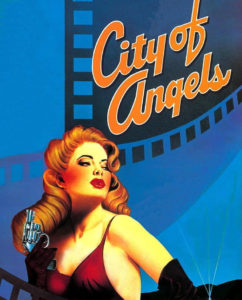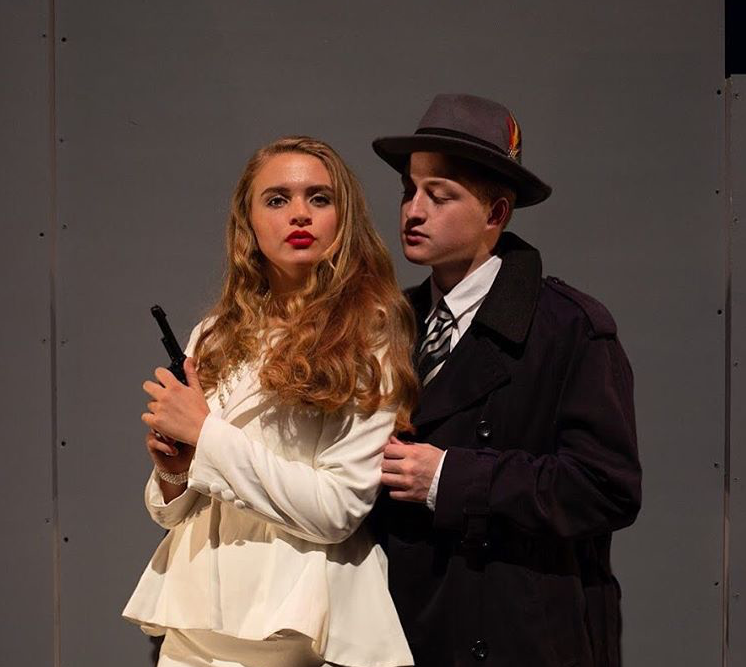 Lights, camera, and action! Coronado School of the Arts (CoSA) brings the Tony-Award-Winning Broadway musical to Coronado High School as their spring performance of 2018. Written by Larry Gelbart (creator and producer of the television series M*A*S*H) and David Zippel, CoSA’s talented actors have shown us an honest portrayal of the reality of movie production in Los Angeles’ capital: Hollywood. Taking place in the late 1940s, a hopeful writer, who wishes to express the beauty of literature into a moving picture, clashes with an egotistical film director/actor, who concerns himself with money and fame while trying to rewrite an entire story.
Lights, camera, and action! Coronado School of the Arts (CoSA) brings the Tony-Award-Winning Broadway musical to Coronado High School as their spring performance of 2018. Written by Larry Gelbart (creator and producer of the television series M*A*S*H) and David Zippel, CoSA’s talented actors have shown us an honest portrayal of the reality of movie production in Los Angeles’ capital: Hollywood. Taking place in the late 1940s, a hopeful writer, who wishes to express the beauty of literature into a moving picture, clashes with an egotistical film director/actor, who concerns himself with money and fame while trying to rewrite an entire story.
Stine (portrayed by Spencer Lynn) wrote a mystery novel titled City of Angels and had received much acclaim that he was hired by a film director Buddy Fidler (portrayed by Myles Manning) to write a screenplay. Both the filmmaking and the film are acted on the stage, with various actors playing multiple roles (within both the show and the film). The main quartet, known as the Angel City 4 (comprised of Kaia Bugler, Lexy Sullivan, Olivia Troyer, and Maya Vidal), open with a vocally-challenging prologue. After this opening, the show jumps right into the movie.

Private investigator Stone (Will Boone) is presented with a case of a missing girl, Mallory Kingsley (Grace Workman), by her stepmother Alaura Kingsley (Isabella Wagner). Wagner is a fourth-year CoSA student and brightly shined on the stage with her beautiful vocal performance and powerful acting.
At a typewriter, Stine has been re-adapting his novel to fit the screenplay, as “advised” by Buddy. Interestingly, the show has a special dynamic between the real-world actors and the characters within the film. In a number where Gabby (Karina Johnson), the wife of Stine, and Donna (Annie Buckley), a character in the real world, express torment with their husband/lover, the characters “speak” to each other, as if they were both experiencing the same thing. This dynamic walks the line between reality and fiction, allowing one to connect to characters that do not exist in their reality. This motif recurs in multiple instances throughout the film and the show itself. Furthermore, it shows us Stine’s internal struggle in having to cope with the reality of his Hollywood experience, while still dreaming about his potential fame and success.

Buddy Fiddler, also Irwin S. Irving within the film, portrays the perfect egotistical director following a personal agenda. Manning captures the essence of his character by appealing to his pretensions and exhibitionism, which creates all the more meaning to the storyline. Since this show takes place in the 1940s, many of these performances conformed to gender and behavioral norms of the time, making the story all the more nostalgic.
Because both storylines occur simultaneously at times, it is difficult to discern whether a particular scene is occurring in the show with the actual characters or if it is occurring with the film that they are shooting. The best thing to do is to pay attention to the two characters who play only one role (Lynn as Stine; Boone as Stone) to ease confusion. When this is surpassed, the show becomes truly enjoyable and has a beautiful resonance. The dancers, the singers, the actors have all shown us tremendous artistic flair that leaves the audience captivated.
Upcoming Showtimes:
Friday and Saturday — April 27 & 28 at Coronado Performing Arts Center @ 7PM




